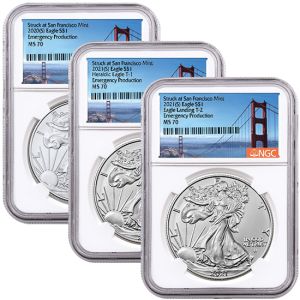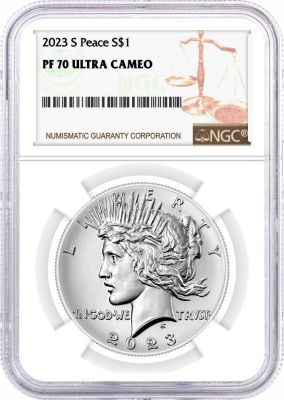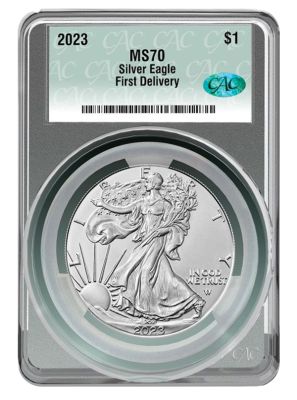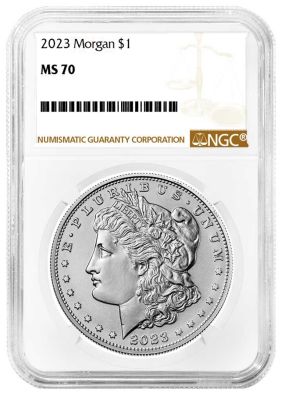Seigniorage: How Much Profit is the Government Making off Coins?

The definition and role of Seigniorage in our government
The word “Seigniorage” comes from Old French meaning the right of a lord, or Seigneur, to mint money. It is the difference between the value of money and what it cost to produce it. Seigniorage is a convenient source of revenue for some governments when the money that is created is worth more than the production cost. The revenue is commonly used by governments to finance some of their expenditures instead of collecting taxes. For example, if it costs the U.S. government 5 cents to produce a $1 bill, the seigniorage is 95 cents, or the difference between the two amounts. In order for minted money to continue circulating as money, there must be some seigniorage. Otherwise, the coins would be taken out of circulation and melted down for the metal.
Coin Production Costs
For the fiscal year ending September 30, 2014, the costs for producing each of the current four circulating coin denominations showed declines compared to the previous year. Those declines  were driven by higher production, decreased metal costs for certain denominations and a reduction in manufacturing costs. In 2014, the cost to produce a cent was 1.66 cents, down from the 1.83 cents it cost to produce it the previous year. The cost to produce a nickel was 8.09 cents, down from 9.41 cents in 2013. The cost to produce a dime in 2014 was 3.91 cents in comparison to 2013 when it cost 4.56 cents. It cost 8.95 cents in 2014 to produce a quarter, down from 10.5 cents the previous year.
were driven by higher production, decreased metal costs for certain denominations and a reduction in manufacturing costs. In 2014, the cost to produce a cent was 1.66 cents, down from the 1.83 cents it cost to produce it the previous year. The cost to produce a nickel was 8.09 cents, down from 9.41 cents in 2013. The cost to produce a dime in 2014 was 3.91 cents in comparison to 2013 when it cost 4.56 cents. It cost 8.95 cents in 2014 to produce a quarter, down from 10.5 cents the previous year.
Does the Government Profit?
During the 2014 fiscal year, seigniorage per dollar issued was 37 cents above the performance target of 24 cents. Though the cent generated negative seigniorage of $55 million and  the nickel generated negative seigniorage of $49.5 million in 2014, the negative amounts were more than offset by the positive seigniorage from the other denominations. Across all denominations and including the impact from mutilated coins, the US Mint generated $289.1 million in positive seigniorage from circulating coinage. This was more than double the prior year total of $137.4 million. As an example, you can see some of our US Mint coins for sale, whose prices are certainly higher than the their respective costs to the Government.
the nickel generated negative seigniorage of $49.5 million in 2014, the negative amounts were more than offset by the positive seigniorage from the other denominations. Across all denominations and including the impact from mutilated coins, the US Mint generated $289.1 million in positive seigniorage from circulating coinage. This was more than double the prior year total of $137.4 million. As an example, you can see some of our US Mint coins for sale, whose prices are certainly higher than the their respective costs to the Government.
Commemorative Coins Profitability
Commemorative coins have traditionally been in high demand with collectors. Often the mint date alone makes a commemorative coin valuable. Collecting commemoratives is a step up from collecting coins from circulation at face value or buying them at shops or shows for a few dollars each. One of the most profitable commemorative coins is the 1915-S Pan Pacific $50 gold round which is valued at between $50,000 and $150,000 in mint state. An uncirculated 1997 Jackie Robinson $5 gold commemorative, with a total mintage of 5,174 pieces, is listed with the PCGS Price Guide as being worth $3,5000 if in MS69 condition and $6,000 in MS70.  The 2014 First Spouse bronze medal set, released October 23, 2014, was recently declared sold-out, making the set the fastest sell-out ever. With an issue price of $16.95 it is now fetching $200 in e-Bay auctions. The electronic creation of money yields the greatest amount of seigniorage since any amount of money can be created electronically at almost no cost. Printing physical currency that is durable and hard to fake or copy necessarily costs more than creating electronic currency. It costs 6 cents to print each United States (US) Federal Reserve note, regardless of its denomination. In the U.S. electronic currency has fast outpaced the use of physical currency. However, globally, there is still a large demand for paper currency, particularly in third world countries that don't have the technology to to manage or distribute electronic currency.
The 2014 First Spouse bronze medal set, released October 23, 2014, was recently declared sold-out, making the set the fastest sell-out ever. With an issue price of $16.95 it is now fetching $200 in e-Bay auctions. The electronic creation of money yields the greatest amount of seigniorage since any amount of money can be created electronically at almost no cost. Printing physical currency that is durable and hard to fake or copy necessarily costs more than creating electronic currency. It costs 6 cents to print each United States (US) Federal Reserve note, regardless of its denomination. In the U.S. electronic currency has fast outpaced the use of physical currency. However, globally, there is still a large demand for paper currency, particularly in third world countries that don't have the technology to to manage or distribute electronic currency.

































